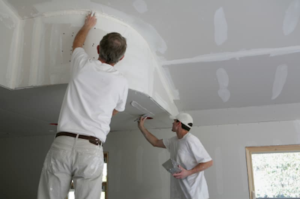Different Types of Pest Control
Abbotsford Pest Control involves reducing the number of unwanted organisms to an acceptable level. This can be achieved through prevention, suppression, or eradication.
Predators, parasites, and pathogens naturally control pest populations. Adding more natural enemies or supplementing them with pheromones and juvenile hormones can further reduce pest numbers.

Keep areas free of clutter where pests can breed and hide. Seal cracks and crevices to prevent pest entry.
Prevention
Prevention is an important form of pest control that focuses on keeping the pests away in the first place. It is less expensive and often more environmentally friendly than pest control methods that involve chemical treatments. A preventive approach usually includes creating barriers and sealing entry points around the home, along with routine maintenance to reduce food and water sources for pests. Some types of preventive treatment are offered by professional pest control companies, but homeowners can also take several steps on their own to reduce the chances of a pest infestation.
Getting rid of food, water and shelter is the best way to reduce the attraction of pests to your property. Regularly removing outdoor materials like firewood and compost piles and regularly storing garbage cans away from the house will help to make your yard less attractive to pests. Regularly mowing the lawn and addressing drainage issues will also help to minimize the amount of organic matter that attracts pests. Clutter and overgrown vegetation provide hiding places for pests, so it is a good idea to remove these items as well.
Pests can cause a wide range of problems in buildings and other structures. This includes contamination of food by bacteria and other organisms carried in the droppings or in the bodies of the pests, damage to building materials and the goods stored inside, fungal decay, and deterioration of artifacts. Proper cleaning practices, vigilance in checking for signs of pests, sealing off possible entry points, and frequent inspections will all help to keep pest populations down.
In some cases, a pest population may have grown to the point where it is necessary to control it using one or more of the available control methods. The purpose of controlling a pest is to reduce its numbers or damage to an acceptable level with the least harm to humans, other animals and plants. Control strategies may include exclusion, quarantine, repulsion, physical removal or chemical controls. Once a pest has been controlled, prevention should be used to prevent the problem from returning. Pesticides should be used sparingly and only when other controls have been unsuccessful.
Suppression
Once a pest problem has been detected, control measures are needed to reduce its numbers to a level that is acceptable. Suppression is often combined with prevention to ensure that the pest never builds up to a harmful level again.
Preventive efforts include removing food, water and shelter sources. This includes putting garbage in tightly sealed cans, removing compost from the site regularly and repairing leaky pipes. It also includes keeping the home clean to eliminate places where pests can breed and hide. Caulking cracks and crevices, removing leaf debris and clogged gutters and putting away stacks of wood or other materials that pests can use as shelter can make the home less welcoming to them. Regularly cleaning the gutters and checking for holes in screens can help prevent the entry of rodents into buildings. Getting rid of weeds and other vegetation that provides shade or cover to rodents can also be helpful.
When preventive measures do not work, controlling pests with traps and other devices is necessary. Depending on the type of pest, a trap will be chosen that is best suited to it. For example, a trap for rats will be designed differently from one for bees. These traps are usually inserted into the ground or under the eaves of the house, and the size of the trap will depend on how much of an infestation is present.
Another method is to introduce natural enemies to the environment to control pest populations. These can be predators, parasites or pathogens. They may be introduced directly, as in the case of predators and parasites, or by making the conditions on a treatment site more favorable to them, such as by providing food and water, allowing them to overwinter or by altering the landscape.
Using this method, it is important to carefully evaluate the situation and environmental factors that led to the pest infestation before implementing control strategies. It is also important to carefully evaluate the safety of each strategy and take measures to protect personal health, others and the environment by following the product label instructions and using basic PPE (personal protective equipment), including long sleeved clothing, closed-toe shoes, face and eye protection when applying treatments.
Biological Control
Biological control is the use of living organisms that naturally occur in nature to reduce pest populations below damaging or intolerable levels. These organisms may be predators, parasitoids, pathogens or competitors. It is generally defined as the active manipulation of antagonistic organisms to reduce pest population densities in garden or field crops to noneconomically important levels. There are three major ways people utilize these natural enemies in their gardens or greenhouses: importing, augmenting and conserving them. The small wasp, Trichogramma ostriniae, introduced from China to help control European corn borer is a classic example of classical biological control. Many classical biological control programs for insect pests and weeds are under way across the United States and Canada.
In some cases, people try to accelerate the work of natural enemies by releasing them from their homes in large numbers. This method is called augmentative biological control, and it can be done either through inoculative or inundative releases. Using this approach, the aim is to get the natural enemy to establish and maintain itself in a new area for long-term suppression of the targeted pest species.
The process of finding and acquiring biological control agents is complicated. They often have specific host ranges, so accurate identification of the target pest species is essential. In addition, most natural enemies are specialized in their activities, so choosing the correct one to target a particular pest requires a thorough understanding of its biology.
Because of these limitations, the success of biocontrol programs depends heavily on the skill of the practitioner. The protocol for acquiring and releasing an agent should be based on its ability to suppress the target pest at the time of release and its propensity to disperse into other areas.
Another option is to delay the arrival of a natural enemy until a critical stage in the life cycle of the pest, such as when the crop is bud burst or flowering. This approach is often referred to as delayed release, and it can be a valuable part of an IPM program.
Lastly, some natural enemies are available for purchase and direct application to crops as a live agent or as a microbial insecticide. These products are usually used in conjunction with other management practices and are designed to provide control over a single pest species.
Chemical Control
Chemical control uses a variety of synthetic or natural chemicals to kill or repel pests. The term “pesticide” covers a wide range of substances, such as herbicides (targeting plants), insecticides (targeting insects), and fungicides (targeting fungus). Chemicals that regulate plant growth or remove foliage are also considered pesticides. These chemical treatments are generally the fastest way to deal with pests, but they can have a significant impact on the environment, and may be dangerous to other organisms if used incorrectly.
A more environmentally-friendly alternative to chemical pesticides is biological control. Biological controls use microorganisms or other living organisms to help protect crops and plants from damage, rather than directly killing them with chemical sprays. There are many types of biological controls, including microbial organisms, bacteria, viruses, and fungi that can disrupt the cellular activity of plants or insects. Some of these organisms are naturally occurring, while others are manufactured in laboratories to create a more targeted effect.
Some of the most common chemical pesticides include insecticides, fungicides, and rodenticides. Each type of pesticide targets a specific type of organism, and the specific organism is revealed in the name; insecticides target insects, fungicides target fungi, and rodenticides target rodents. Some of these chemical compounds work preventively by suppressing or killing pests, while others, such as fungicides, destroy or alter the structure of the organism, such as by interfering with photosynthesis, molting processes, and development.
Whenever possible, try to avoid using chemical pesticides. Instead, try traps and baits to capture the pests. If you must use chemical pesticides, always follow the label’s instructions and safety warnings. Make sure to keep a logbook of pesticide usage, and note the EPA registration number so that you can find more information about the chemical in case you are concerned. Also, dispose of any leftover pesticides properly. These steps can reduce the amount of pesticides that end up in our environment and water supply.








